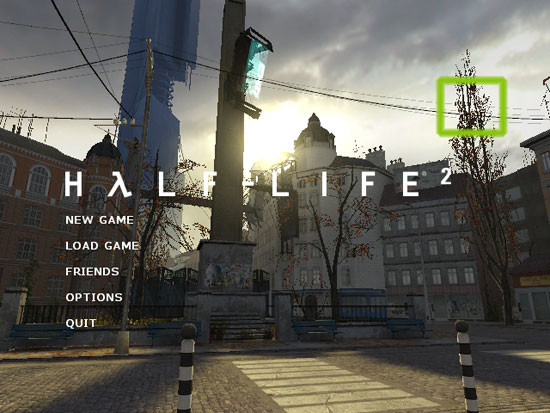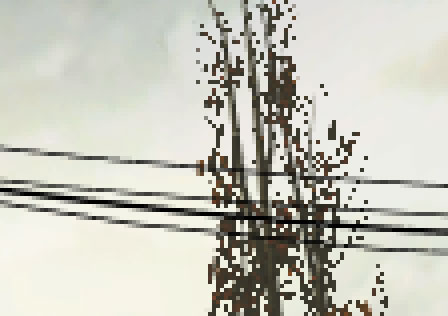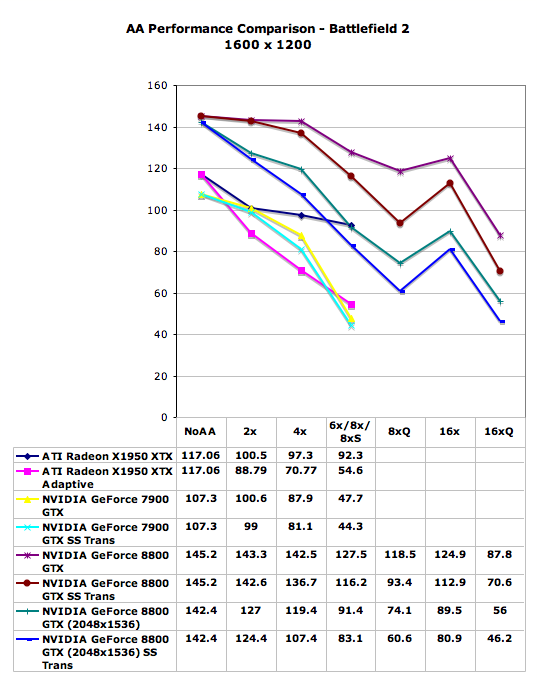NVIDIA's GeForce 8800 (G80): GPUs Re-architected for DirectX 10
by Anand Lal Shimpi & Derek Wilson on November 8, 2006 6:01 PM EST- Posted in
- GPUs
What's Transparency AA?
Transparency AA is NVIDIA's method of applying AA to transparent textures. Because MSAA only looks at one texture sample per pixel per polygon where more than one polygon slices a pixel area, it is not able to smooth jagged edges in transparent textures. In order to combat this, NVIDIA applies supersample AA to transparent textures. Their multisample transparency AA really doesn't do much for visual quality, so we will be ignoring it today. It only allows multisample through transparent texture areas and not of the texture itself.
Supersample AA performs a texture lookup at each sub-pixel to determine how much of the pixel falls on a transparent area of the texture and how much falls on an opaque area. The analog in ATI hardware is called Adaptive AA, which does basically the same thing. This generally has a very large performance impact for 3D scenes with many transparent textures (fence, bushes, leaves, and the like).
All screenshots on this page are 400% zooms of the highlighted portion of the following Half Life 2 screenshot:

Here's a look at Half-Life 2 with and without Transparency AA. We can clearly see how the leaves of the trees get smoothed out and look much better.

G80 No Transparency G80 Transparency AA
Hold mouse over links to see Image Quality
When comparing G70, G80, and R580, we have to remember that for NVIDIA hardware we've disabled gamma correct AA. It isn't possible to do this on ATI hardware, and thus we have a comparison of gamma correct AA on transparent textures as well.

G70 4X No Gamma G80 4X No Gamma ATI 4X Gamma
Hold mouse over links to see Image Quality
G70 and G80 don't look that different, but the R580 creates a kind of mushy look around the trees. This is another side effect of gamma correct AA and its potential negative impact on image quality. Worse examples include wire mesh or fences built with transparent textures: gamma correct AA can end up making parts of a fence disappear. Ideally, if we could apply gamma correct AA to high contrast edges and disable it for everything else, we'd see an image quality improvement. But the downsides just keep piling up with thin lines and transparent textures causing problems for gamma correction.
While transparency AA does enhance image quality a good deal, we do need to consider the performance impact. We'll revisit our antialiasing scaling graph from our CSAA page with Transparency and Adaptive AA enabled.

With G80, we see great performance at high resolution with high levels of AA while Transparency AA is enabled. With this level of performance, as long as R600 is able to keep up, we would love to check the Transparency AA check box every time we test with AA. For now, the performance degradation in R580 is just too high to justify at resolutions over 1600x1200 in most cases. An increase in resolution to a comparable performance level will net a higher gain in image quality.










111 Comments
View All Comments
JarredWalton - Wednesday, November 8, 2006 - link
They did the same thing with the original Halo, porting it (and slowing it down) to DX9. MS seems to think making Halo 2 Vista-only will get people to upgrade to the new OS. [:rolls eyes:]stmok - Wednesday, November 8, 2006 - link
How else are they gonna get gamers to upgrade to Vista? :)(by cornering them into adopting Vista, using DirectX 10.0)
Its sad and pathetic at the same time.
DirectX 10.0 should be a "transitional" solution...That is, it covers both XP and Vista. This allows people to gradually upgrade their hardware, and if they wish, to Vista. What MS is doing now, is throwing everyone (developers and consumers) into the deep end, and expecting them to pay for the changes. (I suspect some would be put off by this, while the majority will continue to accept it...Which is unfortunate).
Great article BTW. Interesting to see the high-end stuff...But I doubt I can afford it in this lifetime!
I have two questions!
(1) Any chance of looking at a triple video card setup?
(I saw a presentation slide which had 2 video cards in SLI, while a third showed something else on screen).
(2) Any idea when the GF8600-series comes?
(mainstream market solution).
yyrkoon - Thursday, November 9, 2006 - link
Great, links arent working ?http://www.gamedev.net/reference/programming/featu...">http://www.gamedev.net/reference/programming/featu...
yyrkoon - Thursday, November 9, 2006 - link
http://www.gamedev.net/reference/programming/featu...">This article was written by a friend of mine back in April after an interview with ATI. Perhaps this will clear some things up.
yyrkoon - Thursday, November 9, 2006 - link
When you break all hardware/software ties to something that has been around for 4-5 years? Its not that easy making it "transitional". From a software perspective, D3D10 is not compatable with XP in the least.I for one, think this is a step in the right direction.
JarredWalton - Thursday, November 9, 2006 - link
Supposedly all of the changes to the WDDM make porting DX10 back to Windows XP "impossible", although I'm more inclined to think the correct term would be "difficult" and you also have to add in "it doesn't fit with MS marketing protocol". WDDM is quite different in Vista however, so maybe there's some substance to the claims.cosmotic - Wednesday, November 8, 2006 - link
On page 9:--Briefly explain what a sub-pixel is in the sentence before--
JarredWalton - Wednesday, November 8, 2006 - link
Due to the size of this article and the amount of time it took to get ready, let me preempt any comments about the spelling and grammar. I am in the process of editing the final document as I read through it, and there are spelling/grammar errors. If they bother you too much, check back in an hour. If you read this an hour from now and you still find errors, then you can respond, though it would be useful to keep all responses in a single thread like this one.Thanks in advance,
Jarred Walton
Editor
AnandTech.com
xtknight - Thursday, November 16, 2006 - link
On p 12 (gamma corrected AA):"This causes problems for thing like thin lines."
acejj26 - Wednesday, November 8, 2006 - link
"If DirectX 10 sounds like a great boon to software developers, the fact that DX10 will only be supported in Windows XP is certain to curb enthusiasm. "I believe this should say "DX10 will only be supported in Windows Vista..."
Not to be rude, but shouldn't the article be edited BEFORE being published??